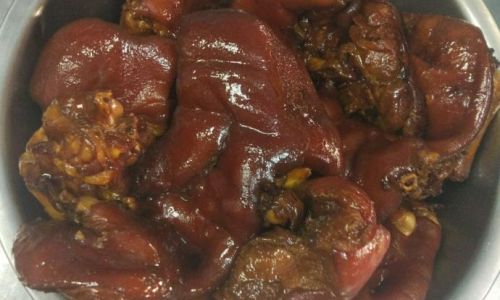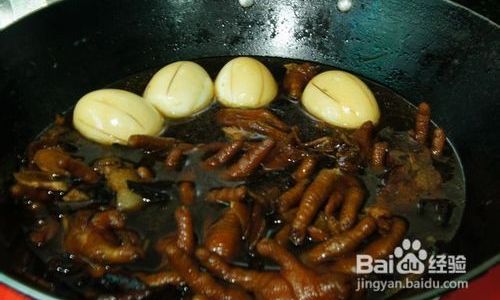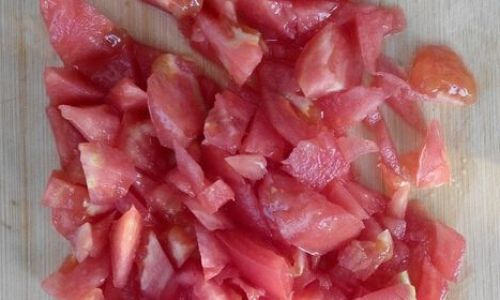Introduction
In the vast culinary landscape of China, there exists a versatile and flavorful component known colloquially as “卤子” (lǔ zi), often translated as “sauce base” or “gravy.” While the term itself might not have a direct English equivalent, the concept encompasses a wide range of thick, savory sauces used to enrich noodles, rice, or dumplings, adding depth and complexity to otherwise simple dishes. From meat-based to vegetarian versions, 卤子 is a cornerstone of many regional cuisines, reflecting the diverse flavors and cooking techniques of Chinese gastronomy.
This guide aims to demystify the process of making 卤子 for those unfamiliar with Chinese cooking, providing a westernized approach that respects the traditional essence while catering to international ingredients and kitchen equipment. Whether you’re a seasoned chef or a home cook eager to explore new culinary horizons, this article will equip you with the knowledge and skills necessary to create your own delicious 卤子.
Understanding the Basics
Before diving into recipes, it’s crucial to understand the fundamental principles behind making 卤子. At its core, a good 卤子 is a balance of flavors: savory, sweet, sour, and umami, often achieved through a combination of meat, vegetables, soy sauce, vinegar, and spices. Texture is another key element; a well-made 卤子 should be thick enough to coat noodles or rice without being gluey.

Ingredients and Tools
Ingredients:
- Meat Base (Optional but Traditional): Pork, beef, or chicken are commonly used. Choose a cut with good flavor and a bit of fat for richness.
- Vegetables: Onions, garlic, ginger, carrots, celery, and mushrooms add both flavor and nutrition.
- Aromatics and Spices: Star anise, cinnamon, cloves, Sichuan peppercorns, and bay leaves provide depth.
- Liquid Seasonings: Soy sauce, rice vinegar, Shaoxing wine (or dry sherry), and sesame oil enhance flavor.
- Starch Thickener: Cornstarch, potato starch, or rice flour to achieve the desired consistency.
- Stock or Broth: Chicken, beef, or vegetable broth acts as the base.
- Additional Flavorings: Hoisin sauce, oyster sauce, or soy sauce-based pastes can be added for complexity.
Tools:
- Large pot or wok for cooking.
- Wooden spoon or ladle for stirring.
- Blender or food processor (optional, for smooth textures).
- Strainer for removing solid bits if a smoother sauce is desired.
- Measuring cups and spoons for precision.
Step-by-Step Guide to Making 卤子

Preparing the Ingredients
- Meat Preparation: If using meat, cut it into small cubes or thin slices. Blanch in boiling water for a few minutes to remove impurities and blood, then drain and set aside.
- Vegetable Prep: Finely chop onions, garlic, and ginger. Dice carrots, celery, and mushrooms into small pieces to ensure they cook evenly.
- Aromatics and Spices: Prepare your spices by tying them in a cheesecloth or using a spice ball to make them easier to remove later.
Sautéing Aromatics
- Heat a tablespoon of oil in your pot or wok over medium heat. Add the chopped onions, garlic, and ginger. Sauté until fragrant and the onions are translucent, about 3-4 minutes.
- Add the diced vegetables and cook until they begin to soften, about 5 minutes. This step builds the foundation of your 卤子’s flavor.
Adding Meat and Spices
- Push the vegetables to the side of the pot and add a bit more oil if needed. Add the prepared meat, searing on all sides until browned. This locks in juices and adds another layer of flavor.
- Incorporate the spices (in cheesecloth or spice ball) into the pot. Pour in enough broth or stock to cover the ingredients by about an inch. Bring to a boil, then reduce to a simmer.
Seasoning and Simmering

- Add soy sauce, rice vinegar, Shaoxing wine (or dry sherry), and a pinch of sugar to taste. Adjust quantities based on your preference for saltiness and sweetness.
- Let the mixture simmer gently, uncovered, for about 30-45 minutes, stirring occasionally. This allows the flavors to meld together and the meat to become tender.
- If desired, you can add a tablespoon of hoisin sauce or oyster sauce at this stage for added complexity.
Thickening the Sauce
- Once the meat is tender and the flavors have developed, it’s time to thicken the sauce. In a small bowl, mix a tablespoon of cornstarch with an equal amount of cold water to form a slurry.
- Gradually stir the slurry into the simmering 卤子, a little at a time, until you reach your desired consistency. Be careful not to add too much or the sauce will become too thick and gluey.
- Continue to simmer for another 5-10 minutes, stirring frequently, to ensure the starch is fully cooked and the sauce has thickened evenly.
Finishing Touches
- Taste and adjust seasoning with more soy sauce, vinegar, or sugar if needed. Remember, 卤子 should be slightly saltier and more flavorful than you might initially think, as it will be used to flavor other foods.
- If you prefer a smoother texture, remove the solid ingredients (meat, vegetables, and spices) with a slotted spoon and blend the remaining liquid until smooth. Return the solids to the pot if desired.
- Finally, add a drizzle of sesame oil for a rich, fragrant finish.
Serving and Storage
- 卤子 is best served hot, poured over noodles, rice, or dumplings. It can also be used as a dipping sauce or a topping for stir-fries.
- Store leftover 卤子 in an airtight container in the refrigerator for up to 3 days. Reheat gently over low heat, stirring frequently to prevent sticking.
Creative Variations

The beauty of 卤子 lies in its versatility. Here are a few variations to inspire your culinary creativity:
- Seafood 卤子: Use shrimp, scallops, or fish fillets instead of meat for a lighter, more delicate flavor.
- Vegetarian 卤子: Increase the variety of vegetables and use vegetable broth. Add tofu or tempeh for protein.
- Spicy 卤子: Incorporate chili peppers, chili oil, or Sichuan peppercorns for a fiery kick.
- Mushroom 卤子: Focus on a variety of mushrooms for an earthy, umami-rich sauce.
- Sweet Potato 卤子: Add cooked and mashed sweet potatoes for a creamy, naturally sweetened version.
Conclusion
Making 卤子 may seem like a daunting task at first, but with patience, attention to detail, and a willingness to experiment, you’ll soon master this essential element of Chinese cuisine. Remember, the key to a successful 卤子 is balance—not just in flavors but also in texture and presentation. As you become more familiar with the process, feel free to adapt recipes to suit your taste preferences and dietary needs. Happy cooking, and enjoy the rich, savory world of 卤子!





0 comments